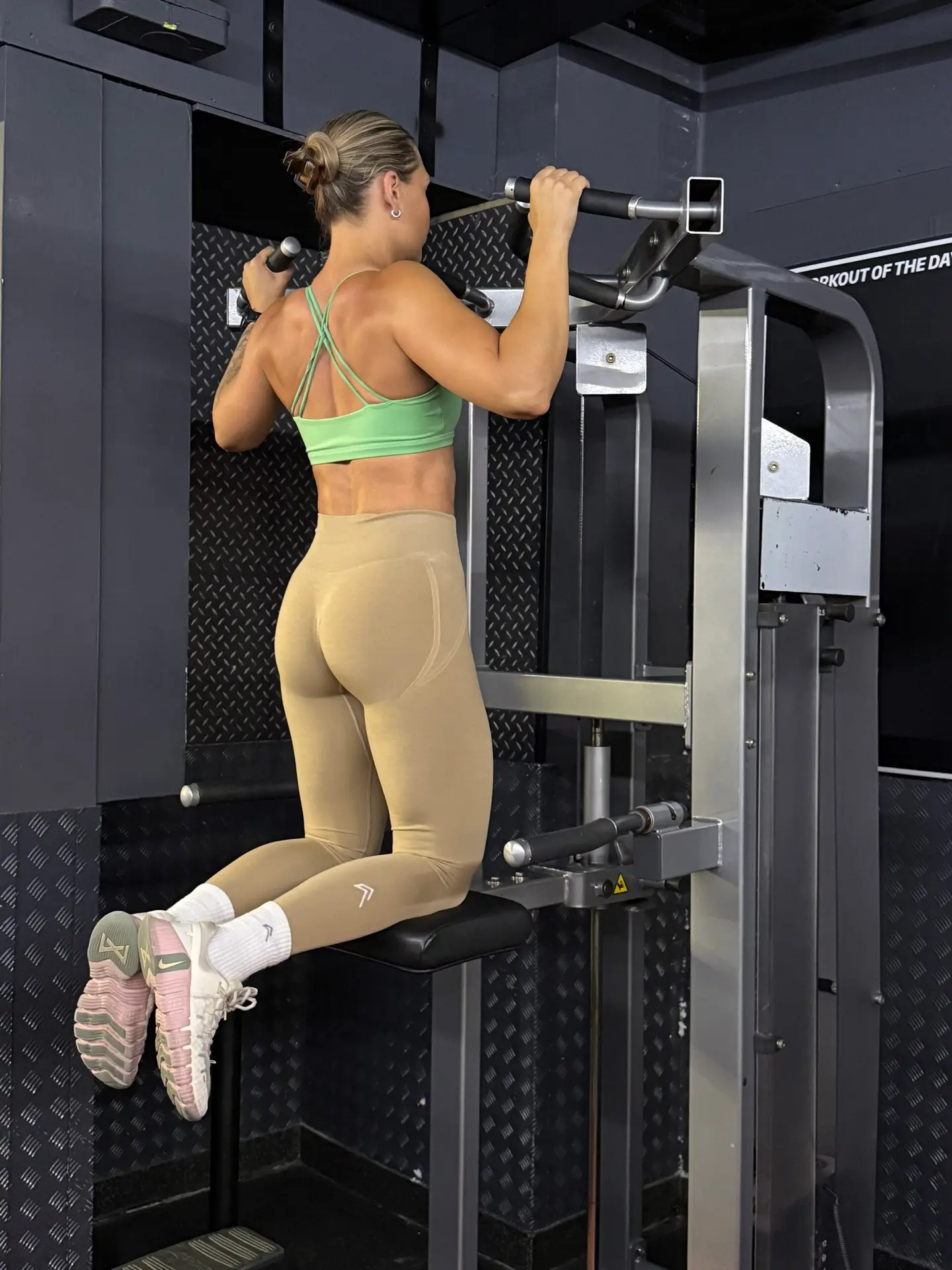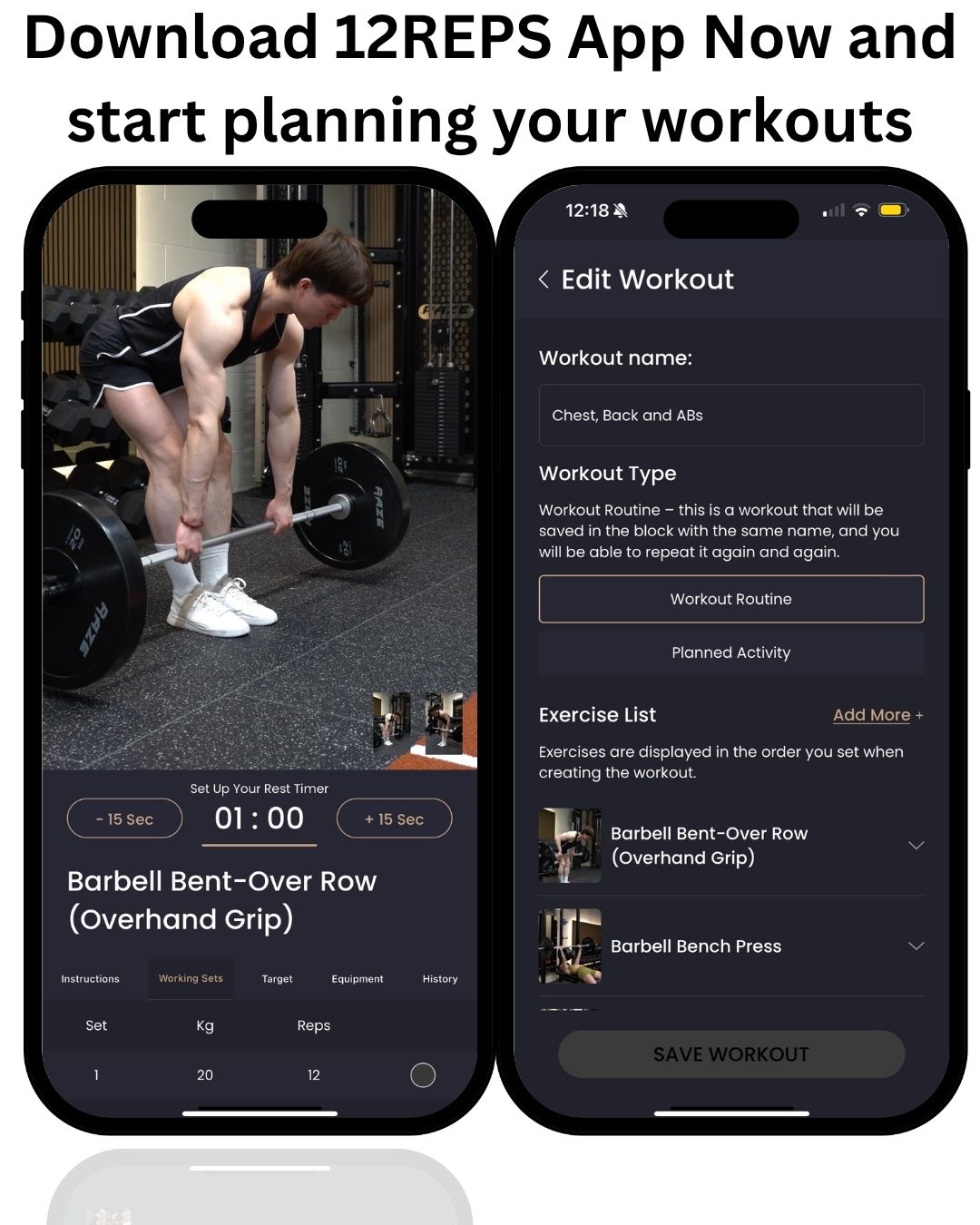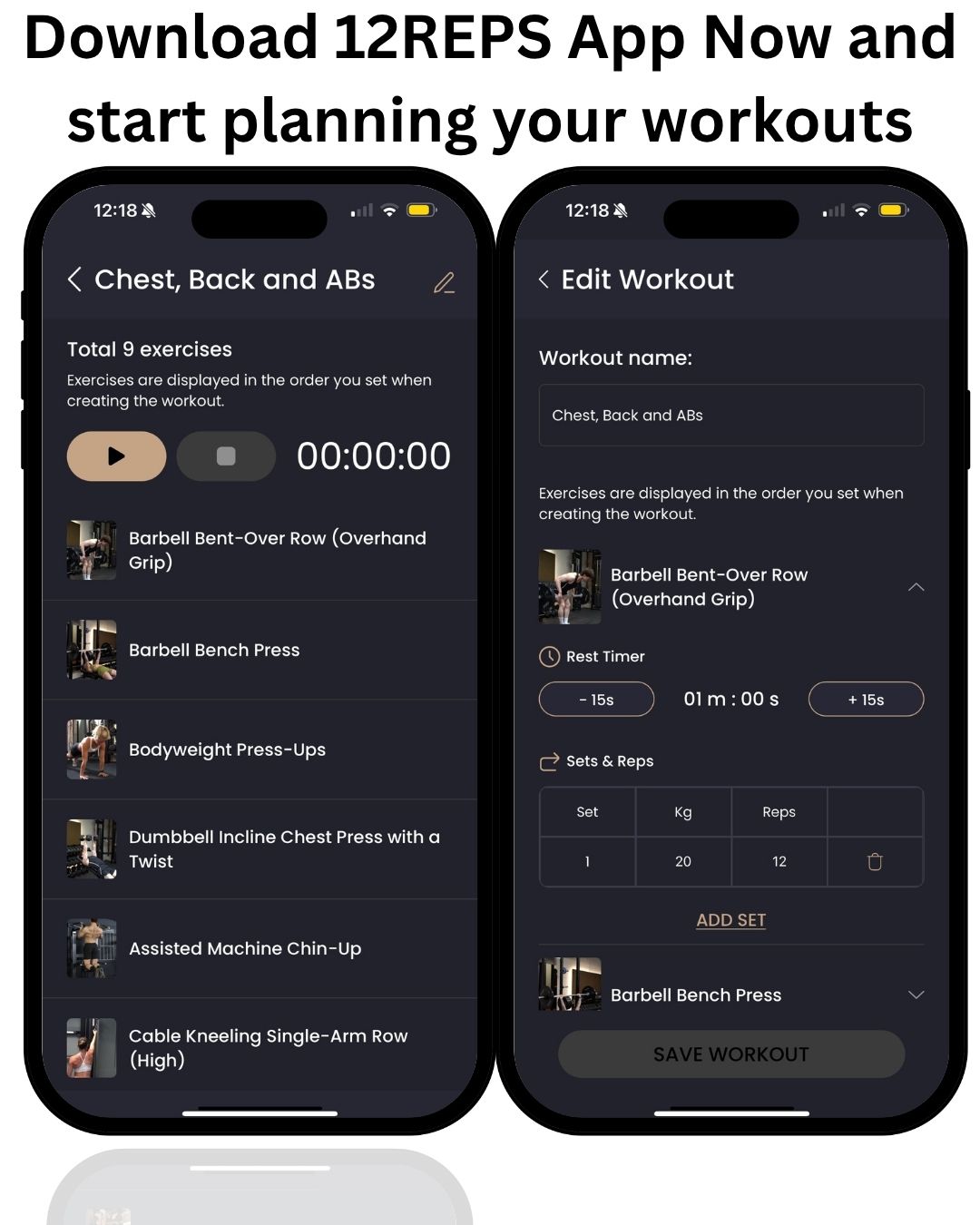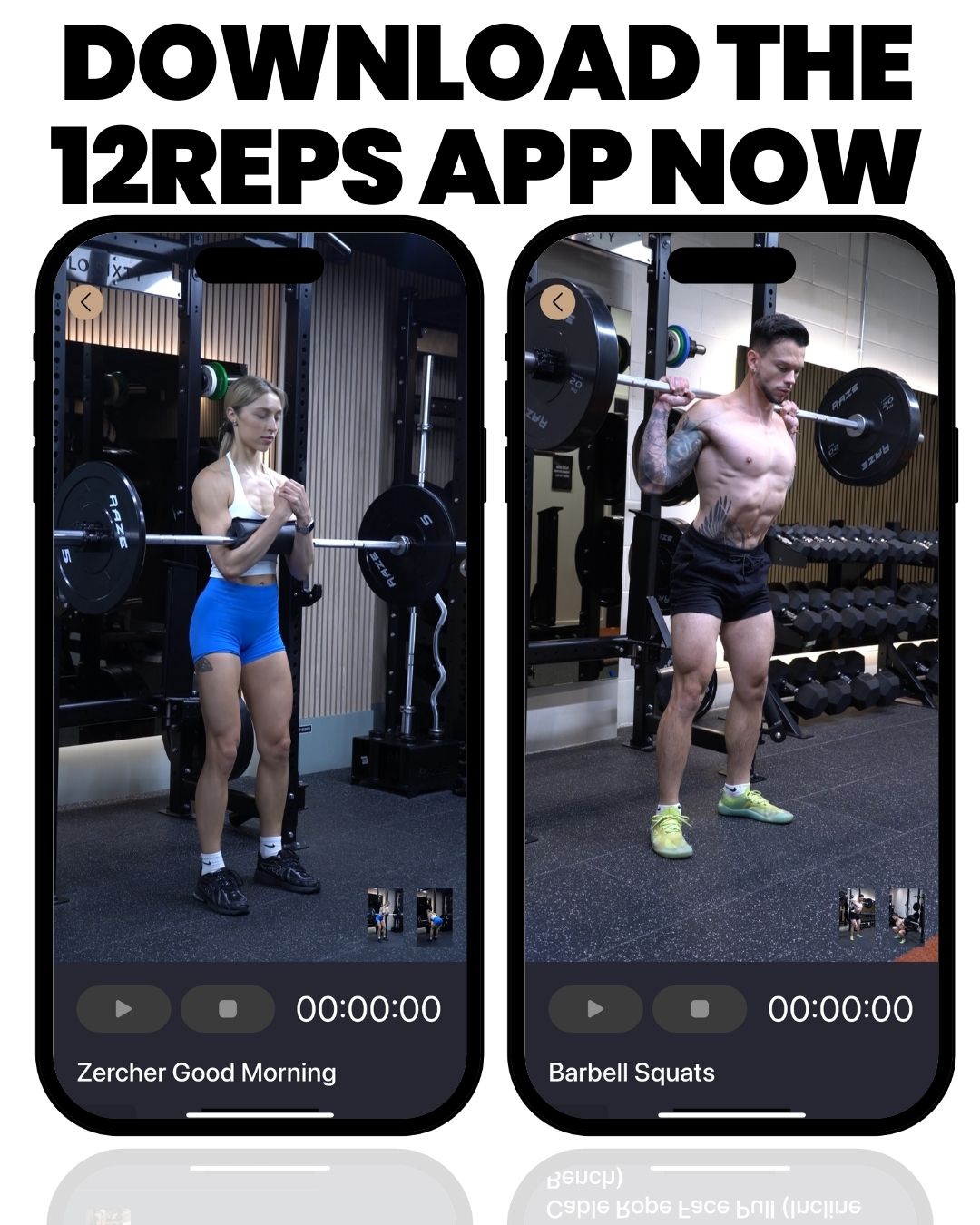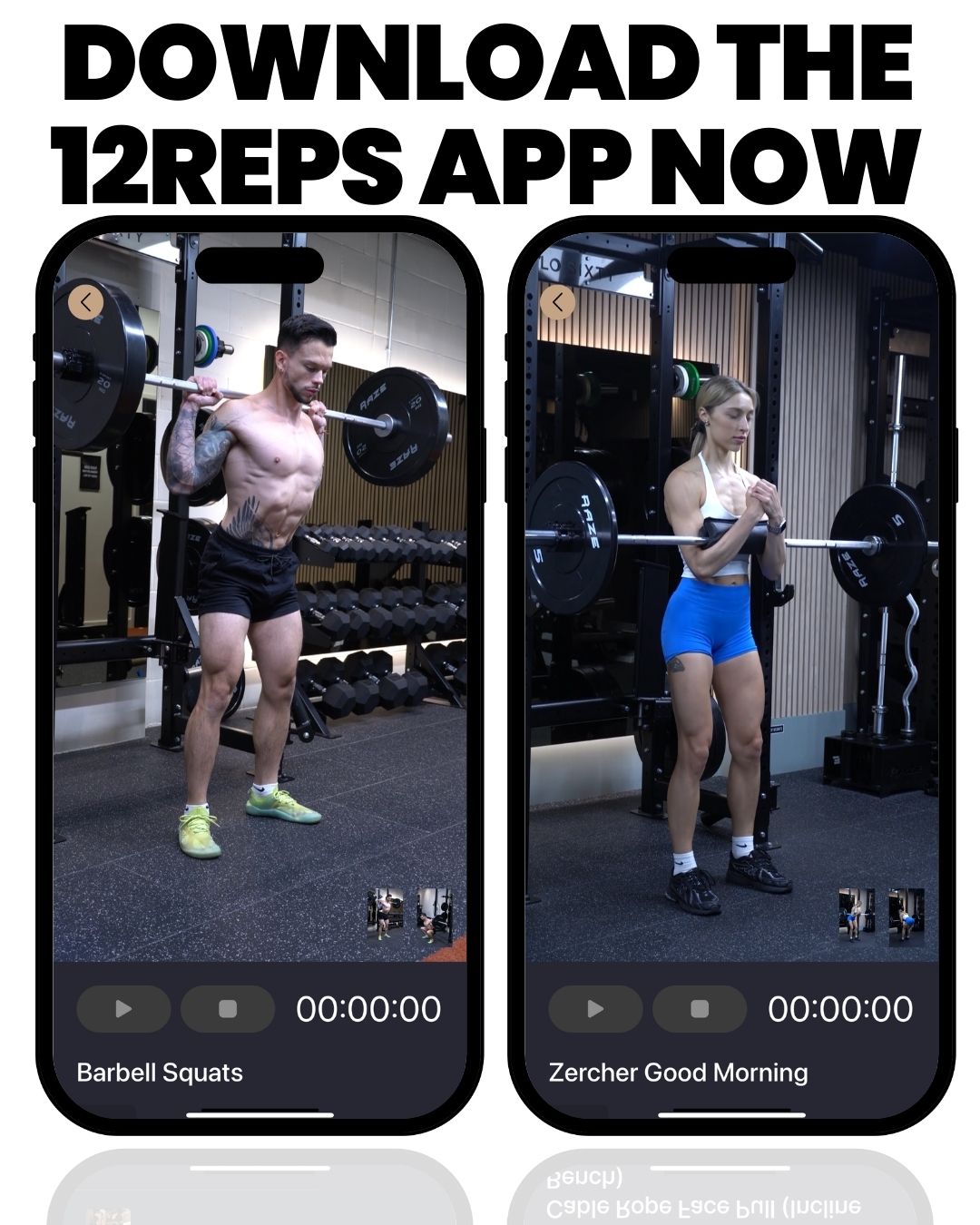Written by Will Duru, BSc (Hons) Sport and Exercise Science, award-winning Personal Trainer with over 10 years of experience in strength training and optimising recovery .
As a personal trainer, I’ve spent years in gyms, and I’ve noticed a recurring scene: the barbell area, a space bustling with energy and clanging weights, is often a male- dominated territory. Women, more often than not, tend to gravitate towards the cardio machines and the lighter dumbbells, leaving the heavy lifting to the men. While any form of exercise is commendable, I can’t help but feel that a huge opportunity is being missed. The barbell is not an enemy to be feared; it’s a powerful tool for transformation, and it’s time for women to claim their space in the squat rack.
This article is my promise to you. We’re going to dismantle the myths that have built a wall between women and barbells. We’ll tackle the fears head-on, one by one, and replace them with facts and actionable solutions. My goal is to show you that barbell training is not just about building muscle; it’s about building a stronger, more confident you. We’ll explore why the fear of getting “too bulky” is unfounded, why barbell exercises are safer than you think, and how to conquer the intimidation of the weight room. Most importantly, I’ll provide you with a practical, step-by-step guide to get you started on your barbell journey.
We’ll delve into the stories of two of my clients, Lucy and Vijune. When Lucy first walked into my gym, the thought of lifting a 40kg barbell was daunting. A year later, she’s confidently pulling 120kg in a sumo deadlift. Vijune started with a similar apprehension, her first deadlift a shaky 45kg. Now, she’s a powerhouse, lifting 115kg with impeccable form. Their journeys are not just about the numbers on the plates; they’re about the strength and self-belief they’ve unearthed along the way. Their stories are a testament to the transformative power of embracing the barbell, and I’m excited to share them with you.
Lucy ( left )– Vijune (right)
The Myth of "Getting Too Bulky"
One of the most pervasive fears I encounter when discussing barbell training with women is the dread of getting “too bulky. “It‘s a common misconception, often fueled by images of professional bodybuilders, that lifting heavy weights will instantly transform a woman into a hulking figure. Let me assure you, this is far from the truth. The science behind muscle growth, particularly in women, tells a very different story
The Science Behind Muscle Growth
The primary driver of significant muscle mass is testosterone. Men naturally produce far higher levels of this hormone than women. While women do produce testosterone, their levels are typically about 15 to 20 times lower than men’s [1]. This fundamental hormonal difference means that the physiological capacity for muscle hypertrophy is affected. (muscle growth) is significantly less in women.
Building substantial muscle mass requires a very specific and intense training regimen, coupled with a highly controlled diet, often supplemented with performance-enhancing drugs. For the average woman training naturally, achieving a “bulky” physique is incredibly difficult, if not impossible. What happens when women lift weights is a process of building lean muscle.
This leads to improved body composition, meaning a higher ratio of Muscle to fat. Muscle is denser than fat, so while you might gain a small amount of weight on the scale due to increased muscle mass, your body will appear leaner, more toned, and often smaller in size. This is the “toned” look that many women desire, and it is achieved not by light weights and endless repetitions, but by challenging your muscles with progressive overload.
Real Results from Real Women
Let’s talk about Lucy. When she first came to me, her goal was to feel stronger and more confident, but she was terrified of looking “manly or hurting her back doing deadlifts. ” She started with a 40kg sumo deadlift, focusing meticulously on form. Over a year, with consistent training, concentrating on other muscles like the back and hamstrings to support her, and a focus on progressive overload, Lucy’s sumo deadlift soared to an incredible 120kg. Did she get bulky? Not. Instead, her physique transformed. Her glutes and hamstrings became more defined, her core strength improved dramatically, and her posture was impeccable. Her clothes fit better, and she exuded a newfound confidence that had nothing to do with the numbers on the scale and everything to do with her strength.
Then there’s Vijune. Her initial deadlift was 45kg, and she too expressed concerns about gaining too much size, fearing that lifting heavy weights and not knowing the proper technique could lead to a back injury. Still, within a year, Vijune was deadlifting 115kg and was now on track to reach her personal goal of 140kg, more than double her body weight. Her body composition shifted dramatically. She lost significant body fat, gained lean muscle, and developed a strong, athletic physique. She often tells me how much better she feels in her clothes and how her energy levels have skyrocketed. These transformations are not about becoming bulky; they are about becoming stronger, healthier, and more capable versions of themselves.
The "Toned" Look Requires Heavy Lifting
The idea that light weights and high repetitions will create a “toned” look is another myth that needs debunking. True muscle definition and the coveted “toned” appearance come from building actual muscle tissue. This requires progressive overload, continually challenging your muscles to adapt by gradually increasing the weight, repetitions, or intensity of your exercises. If you’re not lifting heavy enough to stimulate muscle growth, you’re simply not going to see the significant changes in body composition that lead to a truly toned physique. Furthermore, muscle tissue is metabolically active, meaning it burns more calories at rest than fat tissue. By building more muscle through heavy lifting, you effectively turn your body into a more efficient fat-burning machine, even when you’re not working out. This metabolic advantage is a key component of sustainable fat loss and improved overall health.
Addressing the Fear: It’s essential to understand that building significant muscle takes time – a lot of time. The transformations you see in professional bodybuilders are the result of years, often decades, of dedicated training, strict nutrition, and often, pharmacological assistance. For the average woman, even with consistent heavy lifting, muscle growth is a slow and gradual process. You are in control. If you ever feel you are gaining too much size, you can adjust your training volume or intensity. And remember, muscle changes are not permanent; if you change your routine, your body will adapt accordingly.
Safety Concerns: Separating Fact from Fiction
Another significant barrier I often encounter is the fear of injury. Many women believe that barbell squats and deadlifts are inherently dangerous exercises, prone to causing back pain or other serious injuries. This perception is largely a myth, often perpetuated by anecdotal evidence or images of improper form. In reality, when performed correctly, these exercises are remarkably safe and incredibly beneficial.
The Injury Myth: Let’s put this into perspective. Studies have shown that the injury rates in weightlifting, including powerlifting (which heavily features squats and deadlifts), are significantly lower than in many popular sports like football, basketball, or even running. Most gym-related injuries, regardless of the exercise, stem from poor form, ego lifting (attempting to lift too much weight too soon), or inadequate warm-ups, not from the exercises themselves. Research consistently demonstrates the safety and efficacy of squats and deadlifts when performed with proper technique and progressive loading.
Proper Form is Learnable: It’s crucial to understand that everyone, even the most seasoned lifters, started as a beginner. Learning proper form for barbell squats and deadlifts is a process, and it’s one that anyone can master with patience and dedication. The key is to prioritise technique over weight. Begin with just the barbell or a PVC pipe to ingrain the movement patterns. Focus on controlled movements that engage the correct muscles and maintain a neutral spine. Only once you have a solid grasp of the form should you gradually add weight. For those who are unsure, seeking professional guidance from a qualified personal trainer is invaluable. A good trainer can provide personalised cues, correct imbalances, and ensure you’re performing the exercises safely and effectively. Additionally, resources like the 12Reps app offer detailed video demonstrations and form cues that can be incredibly helpful for self-correction and understanding the nuances of each movement.
Built-in Safety Features: The gym environment itself offers several built-in safety features that can mitigate risks, especially for beginners. Squat racks are equipped with safety bars that can be set to catch the barbell if you fail a lift, preventing it from crushing you. This provides a crucial psychological and physical safety net, allowing you to push your limits without fear of catastrophic failure. Starting with just the barbell, or even bodyweight variations like goblet squats, allows you to build confidence and strength gradually before progressing to heavier loads
Benefits Outweigh Risks The long-term benefits of incorporating barbell squats and deadlifts into your routine far outweigh any perceived risks. These exercises are foundational for building overall strength, improving bone density (a critical factor in preventing osteoporosis, especially for women), and enhancing functional strength for daily activities. A strong posterior chain (glutes, hamstrings, and lower back) developed through deadlifts and squats can significantly reduce the risk of lower back pain and improve posture. By strengthening the muscles around your joints, you actually protect them from injury, making you more resilient in everyday life and other physical activities.
Common Sense Precautions While barbell training is safe, common sense precautions are essential. Always perform a thorough warm-up before lifting to prepare your muscles and joints. Listen to your body; if something feels off, don’t push through pain. Rest and recovery are just as important as the training itself. Finally, ensure you have proper equipment, such as flat-soled shoes for stability and comfortable, non-restrictive clothing.

Conquering Gym Intimidation
Beyond the physical fears of getting bulky or injured, there’s a significant mental barrier that often prevents women from venturing into the barbell area: gym intimidation. It’s a feeling I’ve seen countless times – the apprehension of stepping into a space that feels overwhelmingly male-dominated, the fear of being judged, or the nagging sense of not belonging. This “imposter syndrome” can be just as debilitating as any physical limitation.
The Mental Barrier: The weight room, with its grunts, heavy weights, and focused intensity, can feel like an exclusive club. Many women tell me they feel like they’re being watched, that everyone is silently judging their form or their strength. This social anxiety is compounded by the fact that, historically, weightlifting has been a male-dominated pursuit. It’s easy to feel out of place when you don’t see many people who look like you engaging in the same activities.
Reframing Your Mindset: It’s time to reframe this mindset. First and foremost, remember this: you have every right to be there. You pay the same membership fees as everyone else, and the gym is a shared space for all members to pursue their fitness goals. Every single person in that gym, no matter how strong or experienced they appear, started somewhere. They were once beginners, just like you. Most people in the gym are far too focused on their own workouts to pay much attention to what you’re doing. And if they are looking, it’s often out of curiosity or admiration, not judgment.
Practical Strategies: To ease into the weight room, consider starting during off-peak hours when the gym is less crowded. This allows you to familiarise yourself with the equipment and movements without feeling overwhelmed. Bringing a friend can also provide a huge boost in confidence and accountability. Having someone by your side can make the experience feel less daunting and more enjoyable. Before you even touch a barbell, spend some time observing others. Watch how people set up for squats, how they approach the deadlift platform, and how they re-rack their weights. This can help you understand gym etiquette and feel more comfortable. Don’t be afraid to ask for help. Most experienced lifters are genuinely happy to assist a beginner who is showing initiative and a willingness to learn. A quick question about how to load a barbell or adjust a squat rack can open the door to a supportive interaction.
Building Confidence: Confidence in the gym, like strength, is built through small, consistent wins. Celebrate every milestone, no matter how small, whether it’s mastering a new movement pattern, adding a small amount of weight, or simply showing up consistently. The more you understand the exercises and the equipment, the more confident you’ll become. Consistency is key; the more regularly you practice, the more the anxiety will dissipate. Seek out online communities or local groups of like-minded women who lift. Sharing experiences and successes with others on a similar journey can be incredibly empowering.
Creating Your Space: Finally, learn to confidently claim your space. This means understanding how to properly use and set up equipment like squat racks and deadlift platforms. Familiarise yourself with gym etiquette, such as not hogging equipment, re-racking your weights, and being mindful of others’ space. The more comfortable you become with the physical environment and its unwritten rules, the more you’ll feel like you belong, because you do.
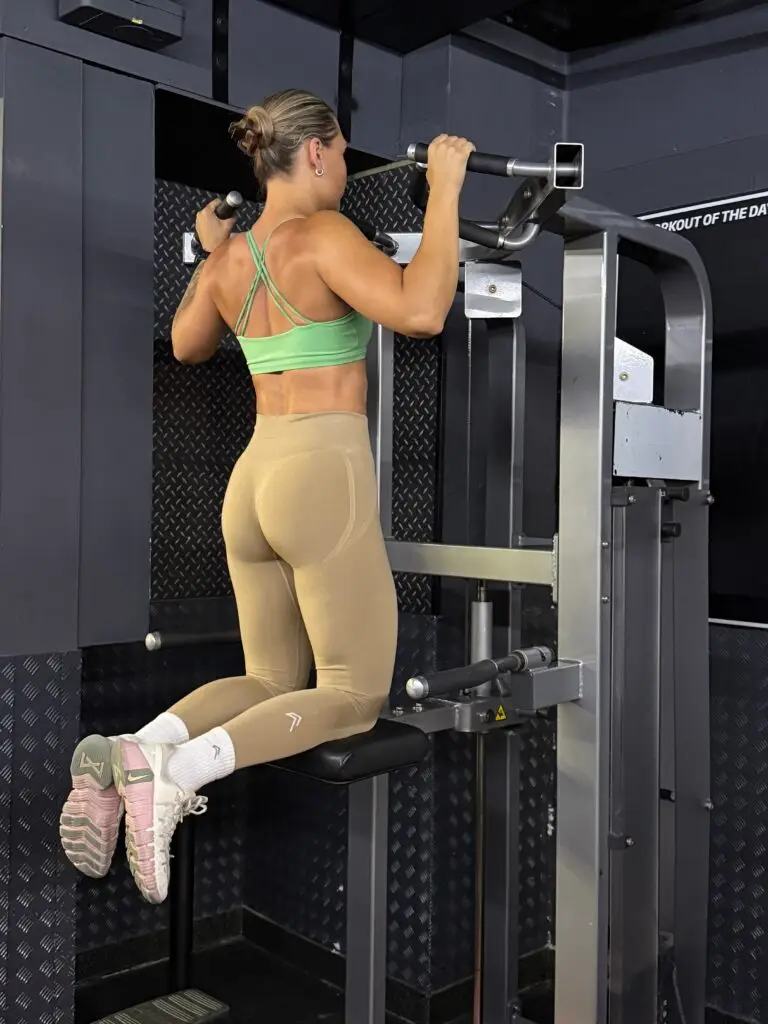
Mastering Form: Your Step-by-Step Guide
One of the most critical aspects of barbell training, and often the biggest hurdle for beginners, is mastering proper form. It’s natural to feel overwhelmed by the technicalities of squats and deadlifts, but remember that form is a skill. Like any skill, it takes time, patience, and consistent practice to develop. Prioritise quality over quantity; a perfect rep with light weight is infinitely more valuable than a sloppy rep with heavy weight. The learning process is progressive, building complexity gradually as your body adapts and your understanding deepens.
Barbell Squat Breakdown
Setup
- Step under the bar in a squat rack.
- Position it across your upper back, resting on your traps (not your neck).
- Grip the bar slightly wider than your shoulders.
- Unrack the bar and take 1–2 steps back.
- Feet roughly shoulder-width apart, toes pointed slightly out (adjust to your comfort).
Descent
- Hinge at your hips and bend your knees at the same time, like sitting into a chair.
- Keep your chest up, core braced, and back straight.
- Knees track in line with toes, not caving inward.
- Lower until your hip crease is below the top of your knee (parallel or deeper).
Ascent
- Drive through your heels and mid‑foot, push the floor away.
- Stand up powerfully, extending hips and knees together.
- Keep a strong, upright posture throughout.
Common Mistakes
- Forward Lean: leaning too far forward due to weak core or tight ankles.
- Knee Cave: knees collapsing inward from weak glutes or poor control.
- Partial Range of Motion: not going deep enough, limiting results.
Modifications
- Bodyweight squats
- Goblet squats (hold a dumbbell/kettlebell at your chest)
- Box squats (to a bench/box)
Deadlift Fundamentals
The deadlift is often referred to as the king of exercises because it engages nearly every muscle in your body and builds strength and power.We focus on conventional and sumo styles.
Conventional Deadlift
Setup
- Stand with mid-foot under the barbell, shins close.
- Feet hip-width apart.
- Grip the bar just outside your shins (overhand or mixed grip).
- Hinge at your hips, back straight, lower to grab the bar.
- Shoulders slightly in front of the bar, hips lower than shoulders.
Lift
- Take a deep breath and brace your core.
- Drive through your heels, push the floor away.
- Keep the bar close to your body.
- Extend knees and hips at the same time.
- Stand tall, squeeze glutes (don’t hyperextend back).
Lowering
- Reverse the movement.
- Hinge at hips first, then bend knees.
- Keep bar close and lower with control.
Sumo Deadlift
(Lucy’s preferred style)
Setup
- Stance is wider, toes turned out.
- Shins close to the bar.
- Grip the bar with hands inside your knees.
- Hinge at hips, keep back straight.
- Torso is more upright than conventional.
- Lift
- Same sequence as conventional: deep breath, brace, drive through heels.
- Knees and hips extend together.
- Bar path is shorter due to wide stance.
Lowering
- Reverse the motion, hips first then knees.
Common Deadlift Mistakes (both styles)
- Rounded Back – from weak core or bad setup.
- Bar Drift – letting the bar move away from your body.
- Hyperextension – leaning back too much at the top.
Progressions
- Romanian Deadlifts (RDLs)
- Rack pulls (lifting from pins)
- Trap bar deadlifts (more upright torso)
Learning Resources
- Use the 12Reps app for video demos and form cues.
- Book a few sessions with a personal trainer for personalised feedback.
- Watch reputable online fitness educators (and always cross-check info).
Form Check Methods
To continually refine your form, incorporate these methods into your routine:
Video Analysis: Record yourself performing your lifts from different angles (side and front/back). Watching your own technique can reveal subtle errors you might not feel. Compare your videos to expert demonstrations.
Mirror Work: Use gym mirrors to observe your form in real-time. Pay attention to your back angle, knee tracking, and bar path. However, be careful not to let watching yourself distract from proper bracing and focus.
Partner Feedback: If you train with a friend, ask them to observe your form and provide constructive criticism. A fresh pair of eyes can often spot issues you miss.
Professional Assessment: Periodically schedule form reviews with a personal trainer. Even experienced lifters benefit from an objective assessment to identify any bad habits that may have crept in or to refine their technique further.
Remember, mastering form is an ongoing journey. Be patient with yourself, celebrate small improvements, and prioritise safe, effective movement above all else. This foundation will not only prevent injuries but also unlock your true strength potential.
The Incredible Benefits You're Missing
By now, I hope you’re starting to see that barbell squats and deadlifts are not just exercises; they are gateways to a stronger, healthier, and more confident you. The benefits extend far beyond the physical, impacting your metabolism, mental well-being, long-term health, and even your daily life.
Physical Transformations: The most obvious benefit of consistent barbell training is the incredible physical transformation you’ll experience. You’ll build significant strength gains, not just for the gym, but for real-world applications. Lifting heavy objects, carrying groceries, or even playing with your kids will become easier.
Your body composition will improve dramatically, leading to a leaner, more athletic physique. As muscle mass increases and body fat decreases, you’ll notice enhanced definition and a more sculpted appearance. These exercises are also fantastic for posture improvement, as they strengthen the core and back muscles, counteracting the effects of prolonged sitting and improving overall alignment. Furthermore, the power and coordination developed through squats and deadlifts can significantly enhance your athletic performance in various sports and activities.
Metabolic Advantages: Barbell training offers significant metabolic advantages. Lifting heavy weights leads to a substantial calorie burn not only during your workout but also for hours afterward, a phenomenon known as the Excess Post-exercise Oxygen Consumption (EPOC), or the “afterburn effect.” More importantly, muscle tissue is metabolically active, meaning it burns more calories at rest than fat tissue.
This means that as you build more muscle, your resting metabolic rate increases, turning your body into a more efficient fat-burning machine 24/7. The hormonal response to heavy lifting, including the release of growth hormone and testosterone (even in women), further contributes to fat loss and muscle building, making it a far more effective strategy for fat loss than cardio alone.
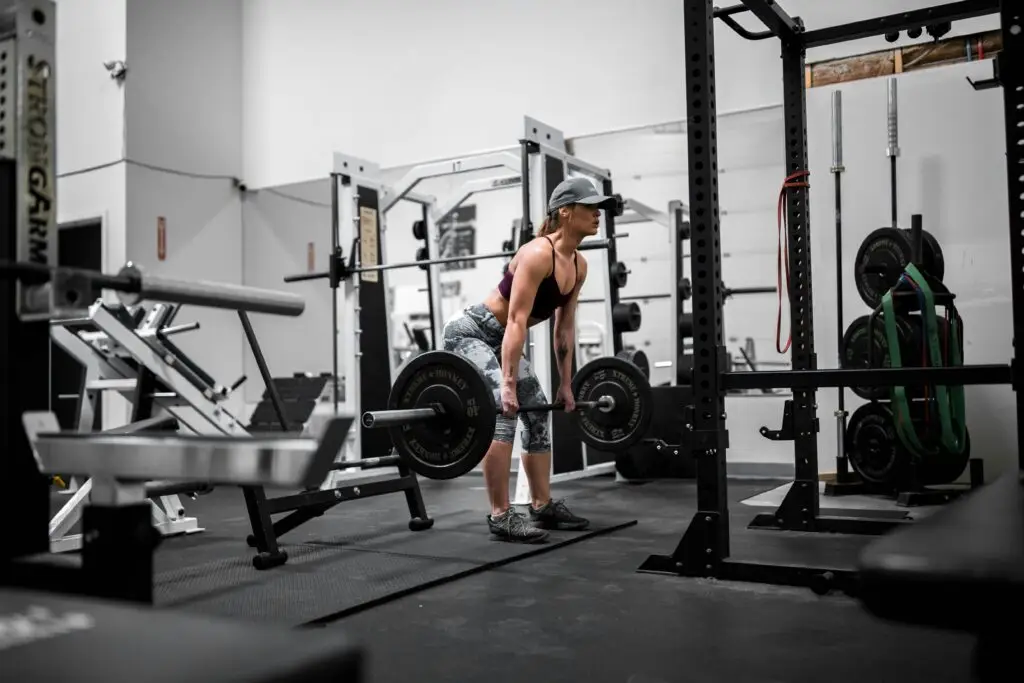
Mental and Emotional Benefits; The impact of barbell training extends deeply into your mental and emotional well-being. There’s an undeniable confidence boost that comes from lifting weights you once thought impossible. Feeling strong and capable in the gym translates into feeling strong and capable in other areas of your life. It’s a powerful form of stress relief, providing a physical and mental outlet for daily pressures. The measurable goal achievement – adding weight to the bar, improving your form, hitting a new personal best, provides a sense of accomplishment that is incredibly motivating. Ultimately, barbell training is about empowerment, breaking through perceived limitations and discovering a strength you never knew you possessed.
Long-term Health Benefits: Looking further down the road, the long-term health benefits are profound. Barbell training is one of the most effective ways to improve bone density, offering crucial protection against osteoporosis, a condition particularly prevalent in women as they age. By strengthening the muscles around your joints, you also promote joint health and stability. This translates into functional aging, allowing you to maintain independence and quality of life well into your later years. A stronger body is also a more resilient body, leading to injury prevention in daily life and other activities.
Lifestyle Improvements: Finally, the improvements you’ll see in your lifestyle are remarkable. Everyday daily activities like carrying groceries, lifting children, or climbing stairs become significantly easier. If you participate in sports performance, you’ll notice enhanced power, speed, and endurance. Your energy levels will likely increase, and many lifters report improved sleep quality due to the physical exertion and hormonal benefits of training. In essence, embracing the barbell doesn’t just change your body; it changes your entire life for the better.
Getting Started: Your Action Plan
Week 1-2: Foundation Building
This initial phase is all about building a solid foundation.
- Focus on mastering bodyweight movements like squats, hip hinges (imagine closing a car door with your glutes), and lunges.
- These movements will teach you proper biomechanics and activate the correct muscle groups.
- Incorporate mobility work to prepare your joints and muscles for the demands of barbell movements. This could include dynamic stretches, foam rolling, and targeted mobility drills for your hips, ankles, and thoracic spine.
- Spend time with gym familiarisation. Walk around the weight area, observe others, and get comfortable with the environment.
- Identify the squat racks, barbells, and plates. Understand how to load and unload plates safely.
This phase is about building confidence in your body’s movement patterns and in the gym environment itself.
Week 3-4: Introduction to Barbells
Now it’s time to introduce the barbell.
- Start with empty barbell practice. The standard Olympic barbell weighs 45lbs (20kg).
- Practice your squats and deadlifts with just the empty bar. This allows you to focus entirely on form focus without the added challenge of heavy weight.
- Record yourself and review your technique. Pay attention to your bracing, bar path, and body positioning.
- Learn and practice safety protocols, such as setting up safety bars in the squat rack and understanding how to bail out of a lift if needed.
- Begin recording progress, not just in terms of weight, but also in how comfortable and confident you feel with the movements.
This initial phase is crucial for ingraining proper motor patterns and building a strong mental connection with the barbell.
Week 5-8: Progressive Loading
Once you’re confident with the empty barbell, it’s time for progressive loading.
- This means gradually adding weight to the bar.
- Start with small increments, typically 5-10lbs (2.5-5kg) per week, depending on your strength and comfort level.
- The goal is to challenge your muscles without compromising form.
- Pay attention to volume management, ensuring you’re doing an appropriate number of sets and repetitions for beginners (e.g., 3-5 sets of 5-8 repetitions).
- Prioritise recovery planning, including adequate rest days, quality sleep, and proper nutrition.
- Active recovery, such as light walks or stretching, can also aid in muscle repair and reduce soreness.
- Continuously monitor your form maintenance as you add weight; if your form breaks down, reduce the weight and focus on technique.
Building Your Routine
Frequency: For beginners, aiming for 2-3 full-body strength training sessions per week is ideal. This allows for sufficient recovery between sessions. You can incorporate squats and deadlifts into these sessions, perhaps alternating them or performing one in each session.
Programming: Integrate squats and deadlifts with other compound exercises (e.g., overhead press, bench press, rows) and accessory movements to ensure a balanced routine. A well-rounded program will address all major muscle groups.
Periodisation: As you advance, you might consider periodisation, which involves structuring your training into cycles with varying intensities and volumes to optimise long-term progress and prevent plateaus. This is something a coach can help you with.
12Reps App Integration: Utilise the 12Reps app for guidance, tracking your progress, and accessing video demonstrations. It can be a valuable tool for self-coaching and staying consistent.
Support Systems
- Finding a training partner can provide accountability, motivation, and even spot you during lifts. Sharing the journey makes it more enjoyable.
- Online communities: Join online forums or social media groups dedicated to women’s strength training. These communities offer a wealth of support, advice, and inspiration.
- Professional guidance: Don’t hesitate to invest in coaching. A qualified personal trainer can provide personalised programming, form correction, and ongoing support, accelerating your progress and ensuring safety.
- Tracking Progress: Keep a Training Log. Record your exercises, sets, reps, and the weight you lift. This allows you to track your progress over time, which is incredibly motivating and helps you plan future workouts effectively. You can also track non-numerical progress, such as improved form or increased confidence.
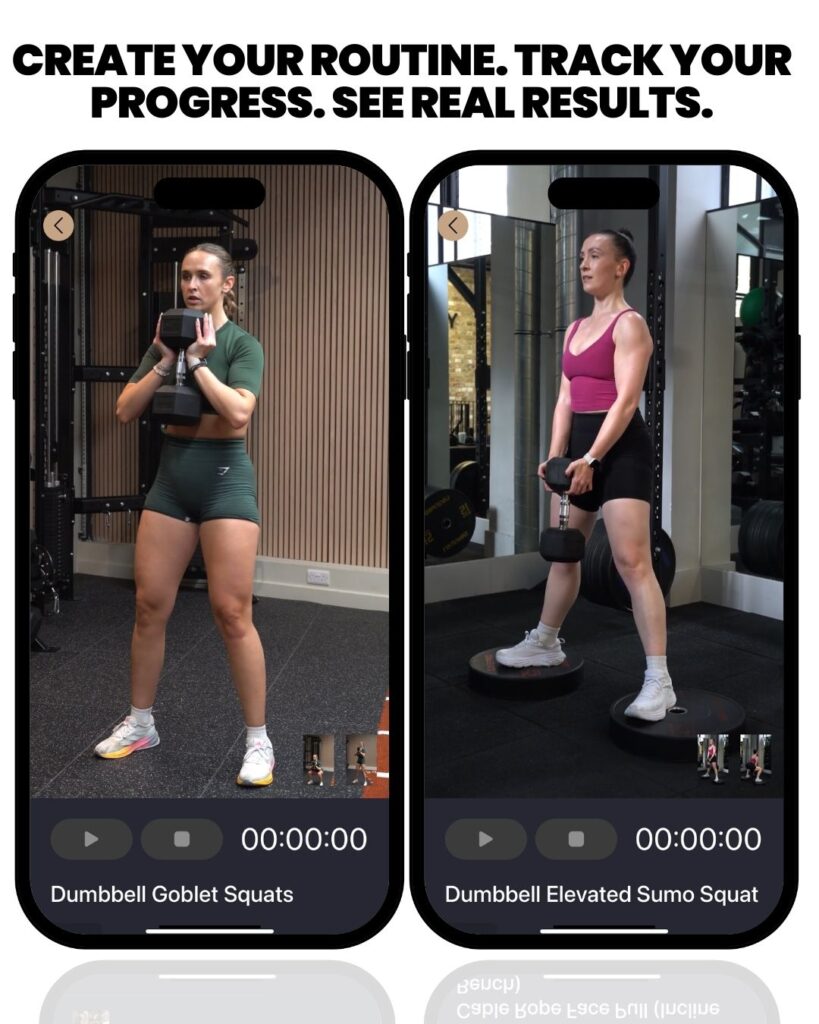
Conclusion: Embrace Your Strength
We’ve journeyed through the common fears and misconceptions surrounding barbell squats and deadlifts for women, and I hope by now you see them for what they truly are: unfounded anxieties holding you back from incredible potential. We’ve debunked the myth of getting “too bulky,” highlighted the inherent safety of these movements when performed correctly, and provided strategies to conquer gym intimidation. Most importantly, we’ve explored the myriad of physical, metabolic, mental, emotional, and long-term health benefits that await you when you embrace the barbell.
Remember Lucy, who went from a hesitant 40kg sumo deadlift to a powerful 120kg in just one year? And Vijune, who transformed her 45kg deadlift into a formidable 115kg? Their stories are not unique; they are a testament to the strength that lies within every woman, waiting to be unleashed. You are stronger than you think, both physically and mentally.
It’s time to take the first step. Don’t wait for the perfect moment; start today with bodyweight movements to build your foundation. Download the 12Reps app to access professional guidance and tracking tools that will support you every step of the way. Join the growing community of strong, empowered women who are redefining what it means to be fit. Commit to trying. Give yourself eight weeks, just two months – to experience the profound difference barbell training can make in your life. You might be surprised at what you discover.
This journey is about more than just lifting weights; it’s about personal growth. The confidence and resilience you build in the gym will spill over into every other area of your life, empowering you to tackle challenges with newfound determination. By embracing your strength, you’re not only transforming yourself but also setting an inspiring example for other women. Imagine the strong, confident woman you’ll become, capable of anything you set your mind to.
You deserve to feel strong, capable, and confident in your own skin. The best time to start this transformative journey is now. And remember, you don’t have to do this alone. The barbell community, and trainers like myself, are here to support you every step of the way. Embrace your strength, and unlock the incredible potential within you.
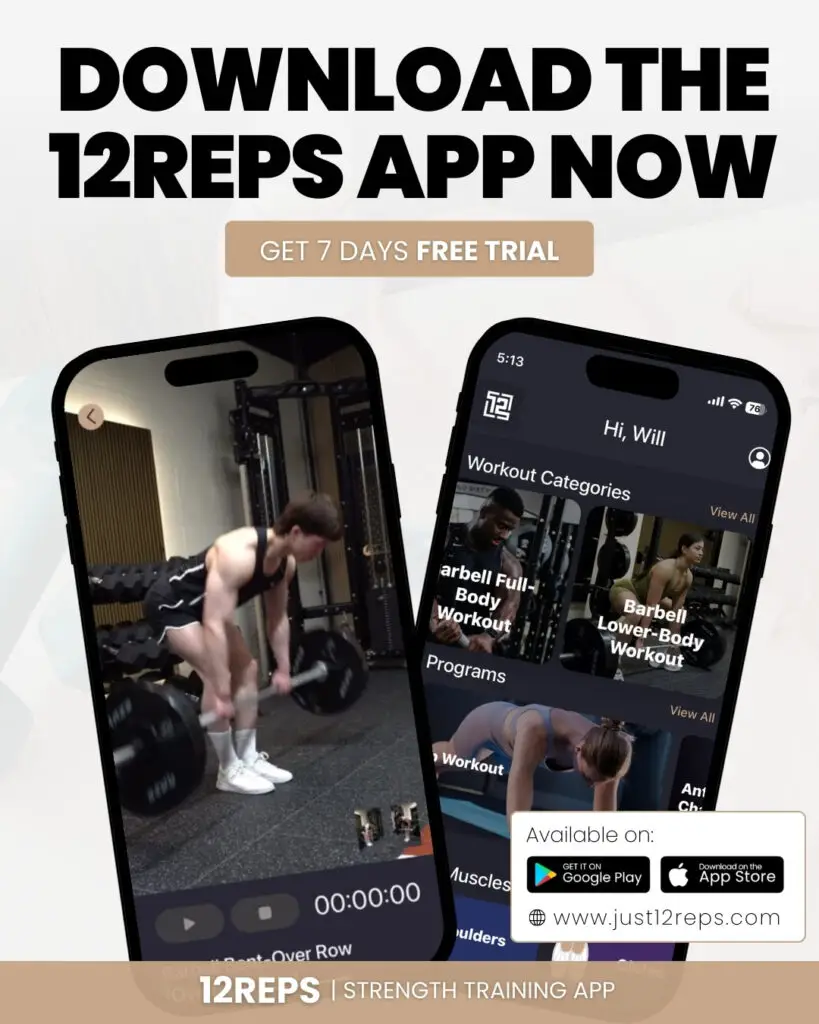
References
[2] Siewe, J., Marx, G., Knöll, P ., Eysel, P ., & Delank, K. S. (2014). Injuries in powerlifting. International Journal of Sports Medicine, 35(12), 1017-1022.
https://www.thieme-connect.de/products/ejournals/abstract/10.1055/s-0034-1372621
[3] Schoenfeld, B. J., & Contreras, B. (2013). The muscle hypertrophy adaptations to high- vs. low-load resistance training. Journal of Strength and Conditioning Research, 27(8), 2247-2259.
[1] Vingren, J. L., Kraemer, W. J., Ratamess, N. A., Anderson, J. M., Volek, J. S., & Maresh, C. M. (2010). Testosterone physiology in resistance exercise and training: the up-stream regulatory elements. Sports Medicine, 40(12), 1037-1053.

